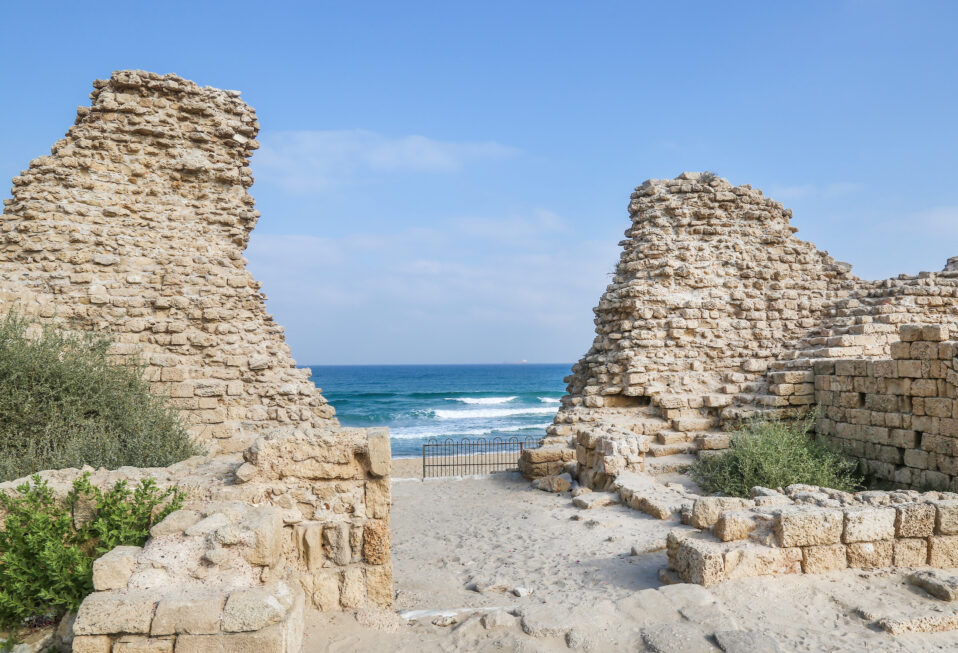Tel Ashdod is located almost four miles south of the modern city of Ashdod. The Bible identifies it as one of the five cities of the Philistines along with Gaza, Ashkelon, Ekron, and Gath.
It appears most prominently in the story of the capture of the Ark of the Covenant by the Philistines (1 Samuel 5:1-7). The Philistines brought the ark to the Temple of Dagon in Ashdod. The statute of Dagon is struck down twice, and on the second occasion, its head and hands were broken off. The people of Ashdod were struck with tumors.
According to 2 Chronicles, king Uzziah of Judah made war against the Philistines and destroyed the walls of Gath and built cities in the territories of Ashdod (26:6). The prophet Amos spoke of the destruction of Ashdod in his oracle against the nations (1:8). Jeremiah, Zephaniah, and Zechariah also prophesied the destruction of Ashdod in their oracles against the nations.
The city’s prominence declined in the 7th century B.C., and it may have even fallen under the control of king Josiah of Judah for a time towards the end of the 7th century B.C. Ashdod, like Ekron, Ashkelon, and Gaza, was destroyed by Nebuchadnezzar around 600 B.C., which was mentioned by the prophets Jeremiah, Zephaniah, and Zechariah. During the Persian period, Ashdod was Persian province; the book of Nehemiah mentions the Ashdodites conspiring against the Judeans (4:7).
The Hasmoneans conquered Ashdod, which was called Azotus at that time, in the 2nd century B.C. When the Roman general Pompey entered the Hasmonean kingdom in 63 B.C., he removed Ashdod from Judaea; Pompey’s successor Gabinius reconstructed it. Caesar Augusts granted Ashdod to the kingdom of Herod the Great (the Herod of Matthew 2).
Excavations at Ashdod have revealed that in Iron Age I (1200-1000 B.C.) Philistine material culture appears, as the Philistines settled in the land from the Aegean area. The archaeology of Ashdod illustrates the connection of Philistine culture with sites on Cyprus and Mycenae.
Even foodways and cooking traditions show the connection between the Philistines and the Aegean world. Evidence of pottery workshops were uncovered by the excavators. Excavations reveal that Ashdod reached its peak in the late 9th to 8th centuries B.C. During the late 8th century B.C., however, Ashdod was destroyed by the Assyrian king Sargon II.
Marc Turnage is President/CEO of Biblical Expeditions. He is an authority on ancient Judaism and Christian origins. He has published widely for both academic and popular audiences. His most recent book, Windows into the Bible, was named by Outreach Magazine as one of its top 100 Christian living resources. Marc is a widely sought-after speaker and a gifted teacher. He has been guiding groups to the lands of the Bible—Israel, Jordan, Egypt, Turkey, Greece, and Italy—for over twenty years.
Website: WITBUniversity.com
Facebook: @witbuniversity
Podcast: Windows into the Bible Podcast




Post a comment